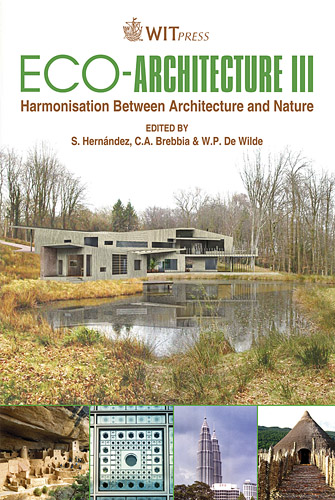Sensitive Apertures
Price
Free (open access)
Transaction
Volume
128
Pages
12
Page Range
73 - 84
Published
2010
Size
1,692 kb
Paper DOI
10.2495/ARC100071
Copyright
WIT Press
Author(s)
Á. Malo & B. A. McDonald
Abstract
Light, vision and perception are fundamental aspects of our conception of space and our experience of architecture. The perception of light is affected by the composition and surface of materials, by the geometry of space and by the physiology of the sense of sight. This is a study of ‘light itself as a material,’ carried out as a Material Technologies Master’s Thesis. The research is focused on light at dawn and dusk, when twice a day photoreceptive cells in our eyes, cones and rods, reach a crossover point of equal efficiency. This perceptual phenomenon within the ‘mesopic vision range’ marks a unique moment of visual awareness and the threshold for a search for the ‘right’ kind of light. It begs the question: Right kind of light for ‘what’? What if through the free and ordered play of light we are able to fine tune the coordinates that affect our inner sense, seeking points of passage in a hypothetical matter-space and time-spirit continuum? What follows is a series of logical propositions, perceptual observations, physical experiments and ‘hardware-software’ simulations that examine the hypotheses and generate possible heuristic evidence. Keywords: light, material, geometry, spatial and temporal perception, reflection, refraction. 1 Introduction Rather than dimming daylight after using large expanses of translucent materials such as plastic or glass, this study is focused on using opaque materials pierced with small, solar oriented, refractive apertures to admit and redirect a limited amount of light onto the interior surfaces of space. When the direction of the sun and the geometry of the light containers align, light will fill the spaces uniformly. At all other times, the enclosure will admit light in a dynamic way that will reveal the changing light and the passage of time.
Keywords
light, material, geometry, spatial and temporal perception, reflection, refraction





